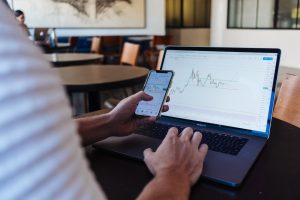Forex, also known as foreign exchange, is the largest financial market in the world, with over $5 trillion traded daily. This market involves the buying and selling of currencies from different countries, and it is highly volatile, meaning that the prices of currencies can fluctuate rapidly in short periods. To make profits in this market, traders use various strategies, including leveraging.
Leveraging, also known as margin trading, is a technique that allows traders to control large positions in the forex market with a small initial investment. This means that traders can increase their exposure to the market and potentially earn higher profits than they would with their capital alone. However, leveraging also comes with significant risks, and traders must understand how it works and the risks involved before using it.
How Leveraging Works in Forex?
Leveraging works by borrowing money from a broker to increase the size of a position in the forex market. The amount of money that a trader can borrow is called the leverage, and it is expressed as a ratio. For example, if a trader has a leverage ratio of 1:100, they can control a position that is 100 times larger than their initial investment. This means that if a trader invests $1,000, they can control a position worth $100,000.
To use leveraging, a trader must first open a margin account with a broker. The broker will require the trader to deposit a certain amount of money, called margin, to cover the potential losses from the trade. The margin varies depending on the leverage ratio, the currency pair being traded, and the broker’s policies. For example, if a broker requires a margin of 1% for a leverage ratio of 1:100, the trader must deposit $1,000 to control a position worth $100,000.
Once the trader has opened a margin account and deposited the required margin, they can place trades in the forex market. If the trade is profitable, the trader will earn a profit based on the size of the position they control. However, if the trade is not profitable, the losses will also be based on the size of the position, which can result in significant losses.
The Risks of Leveraging in Forex
Leveraging is a high-risk strategy, and traders must understand the risks involved before using it. The most significant risk of leveraging is the potential for significant losses. If the market moves against the trader’s position, the losses can exceed the initial investment and the margin, leading to a margin call, where the broker will close the position to prevent further losses.
Another risk of leveraging is the potential for volatility. The forex market is highly volatile, meaning that prices can fluctuate rapidly in short periods. This volatility can lead to significant gains or losses, depending on the trader’s position. Traders must have a solid understanding of the market, technical analysis, and risk management to minimize the risks involved.
Conclusion
Leveraging is a common strategy used by traders in the forex market to increase their exposure and potentially earn higher profits. However, leveraging is a high-risk strategy that requires a solid understanding of the market, risk management, and technical analysis. Traders must also choose a reputable broker that offers transparent policies, low spreads, and adequate leverage ratios. By understanding how leveraging works and the risks involved, traders can make informed decisions and potentially earn profits in the forex market.





